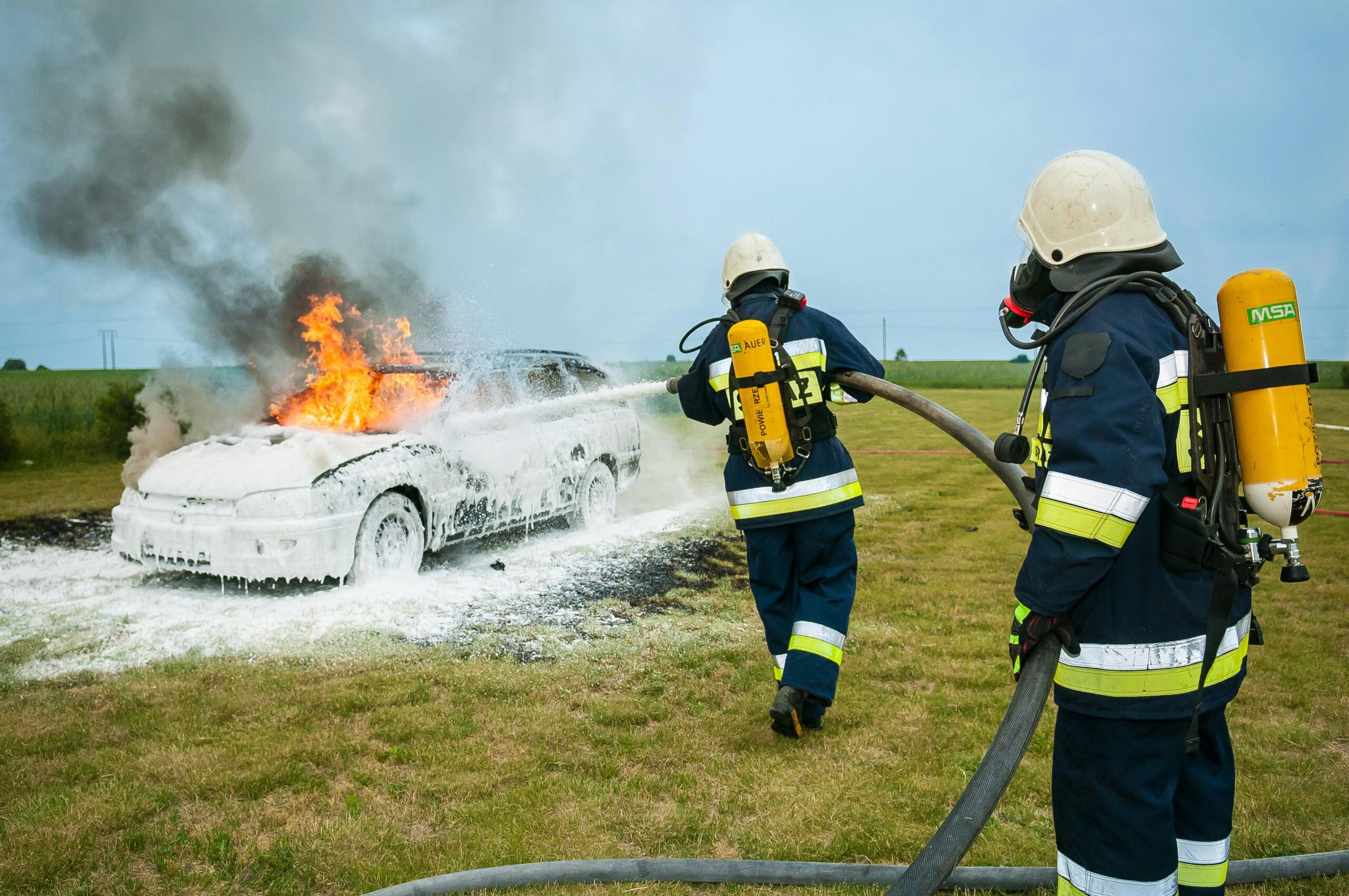NEWS
How AFFF Firefighting Foam Weakens Your Immune System?

Firefighters selflessly rush into danger to protect lives and property. However, the very tools they use to combat flames might be silently jeopardizing their health. Aqueous film-forming foam (AFFF), long hailed as a firefighting hero, has been scrutinized for containing harmful chemicals that can weaken the immune system.
In this article, we explore how AFFF exposure suppresses immunity, increasing firefighters’ susceptibility to infections and potentially raising autoimmune disease risks.
Understanding AFFF Firefighting Foam
AFFF has been a mainstay in firefighting for decades, lauded for its effectiveness in extinguishing flammable liquid fires. It works by creating a film on the surface of the liquid that smothers the flames and prevents reignition. However, AFFF contains per- and polyfluoroalkyl substances (PFAS), which are known for their persistence in the environment and potential health risks.
These PFAS chemicals are raising concerns. Studies suggest they can interfere with the body’s hormonal system and immune function. Ongoing research underscores AFFF exposure’s link to health issues such as cancer risk and immune dysfunction. Also, developmental problems in children are associated.
TorHoerman Law highlights PFAS’s presence in 5,000 communities across all states. According to their findings, this exposure has endangered 60 million Americans.
The rise in awareness of AFFF’s health hazards has led to lawsuits against manufacturers. Plaintiffs argue manufacturers knew about PFAS risks but didn’t warn adequately. In a recent AFFF lawsuit update, the MDL saw an increase of over 300 new AFFF lawsuits. Presently, the litigation encompasses 8,061 pending cases, as per the latest filings from the JPML.
Immune System Basics
The immune system functions as a sophisticated defense network comprising cells, tissues, and organs. Its primary objective is to safeguard the body from pathogens such as viruses, bacteria, and parasites. Continuously vigilant, it detects and responds to potential threats with precision, aiming to eliminate them effectively.
The immune system is a remarkable defense mechanism comprised of various components. White blood cells serve as its frontline fighters, with phagocytes engulfing pathogens and lymphocytes producing antibodies. Lymph nodes and the spleen serve as crucial hubs for immune cell activity.
Meanwhile, the bone marrow continually generates new immune cells, while the thymus plays a pivotal role in educating lymphocytes. Collectively, these components create a robust barrier against harmful pathogens.
A functioning immune system is crucial for firefighters’ health, as they are constantly exposed to germs and smoke during fire emergencies.
FoodSafety.gov states that a robust immune system efficiently clears infections and foreign agents from the body. However, individuals with weakened immune systems face prolonged illness, higher hospitalization rates, and increased mortality risks from foodborne illnesses. Maintaining a healthy immune system is crucial for effective defense against pathogens and ensuring overall well-being.
Health Risks of AFFF Exposure on the Immune System
While using AFFF to safeguard communities, firefighters may paradoxically face immune system compromise due to PFAS exposure. Research indicates that PFAS chemicals in AFFF can disrupt the body’s innate defenses, heightening infection susceptibility and potentially fostering autoimmune conditions.
It underscores the dual impact of firefighting foam, protecting while potentially endangering those who utilize it.
AFFF exposure can detrimentally affect the immune system through various mechanisms. Firstly, PFAS chemicals in AFFF may suppress immune responses by disrupting communication between immune cells, impairing their ability to detect and eradicate pathogens. Also, exposure might interfere with the production of antibodies, which are crucial for the targeted defense of the adaptive immune system.
According to a study published by the National Institute of Health, firefighters spend approximately 72% of their 24-hour shifts inside the fire station. This prolonged exposure to PFAS in AFFF may increase the risk of respiratory diseases among firefighters, resulting in weakened immunity. The study recommends minimizing PFAS presence within fire stations to mitigate this health risk.
Potential Health Consequences of Immune System Weakening
A compromised immune system leaves the body vulnerable to various health problems. When AFFF exposure disrupts the immune system’s delicate balance, firefighters face an increased risk of various illnesses. However, the weakened immunity can have far-reaching health consequences, extending beyond immediate concerns of infection susceptibility.
Weakened immune systems can make people more susceptible to infections ranging from common colds to severe pneumonia. Autoimmune diseases may also arise as the immune system mistakenly attacks healthy tissues. Besides, preliminary research hints at a potential association between weakened immune function and elevated cancer risks.
Genetic mutations significantly contribute to cancer development, as highlighted by MedicineNet. As individuals age, the likelihood of mutations rises while immunity declines. Consequently, the combination of heightened mutations and decreased immunity amplifies the risk of cancer occurrence.
Environmental and Public Health Concerns
AFFF’s effects extend beyond firefighters’ immunity, posing substantial environmental and public health concerns regarding its use and disposal.
The key culprit is the presence of PFAS chemicals in AFFF. The term “forever chemicals” refers to substances with exceptional persistence, indicating their resistance to environmental degradation. Upon AFFF application, these compounds can permeate soil and groundwater, contaminating drinking water reservoirs.
PFAS contamination isn’t limited to areas where AFFF is used. Contamination can originate from fire training facilities, airports, and military bases, posing risks to surrounding environments and communities. PFAS can also travel long distances through air and water, leading to widespread exposure in the general population.
Mitigation and Prevention Strategies
Ongoing research prompts proactive measures to mitigate and prevent risks associated with AFFF exposure.
Fire departments are actively transitioning to safer firefighting foams devoid of PFAS chemicals to mitigate health and environmental risks. When AFFF use is unavoidable, firefighters should prioritize wearing appropriate personal protective equipment (PPE) and undergo regular training on safe handling practices.
Participation in medical monitoring programs can aid in the early detection of potential health effects from AFFF exposure. Also, raising public awareness about PFAS contamination is crucial to prompt proactive measures and advocate for stricter regulations.
Frequently Asked Questions
How does AFFF exposure affect the immune system?
Exposure to AFFF, containing PFAS, can disrupt immune system function. PFAS compounds may diminish white blood cell function, impede antibody production, and disrupt cytokine signaling, heightening infection susceptibility and inflammation.
What health risks are linked to weakened immune function from AFFF exposure?
Exposure to AFFF weakens the immune system and elevates susceptibility to autoimmune disorders, chronic inflammation, and specific types of cancer. Long-term PFAS exposure in AFFF correlates with increased incidences of liver, kidney, and testicular cancers, underscoring immune system vulnerability.
What preventive actions can individuals adopt to minimize exposure to AFFF?
Individuals can reduce AFFF exposure by wearing appropriate protective gear, such as gloves and respiratory masks, during firefighting activities. Also, advocating for PFAS-free foams and stricter AFFF regulations minimizes environmental contamination and human exposure risks.
Protecting Our Health and Environment
The use of AFFF in firefighting operations poses significant risks to human health and environmental integrity. Phasing out PFAS-containing foams, strict AFFF regulations, and investing in alternatives can mitigate AFFF’s adverse effects on immunity and the environment. Policymakers, industries, and communities must collaborate to tackle AFFF challenges and prioritize human health and environmental well-being.
Only through collective action can we effectively mitigate the risks associated with AFFF exposure and build a safer, healthier future for all.







